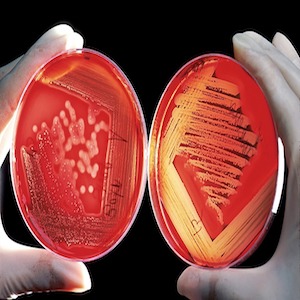Effectiveness of essential oils against dual-species biofilm of Listeria monocytogenes and Pseudomonas fluorescens in a Ricotta-based model system

Accepted: 13 February 2023
HTML: 13
All claims expressed in this article are solely those of the authors and do not necessarily represent those of their affiliated organizations, or those of the publisher, the editors and the reviewers. Any product that may be evaluated in this article or claim that may be made by its manufacturer is not guaranteed or endorsed by the publisher.
Authors
Biofilms represent an evolutionary form of life, which translates from life in free-living cells to a community lifestyle. In natural habitats, biofilms are a multispecies complex, where synergies or antagonisms can be established. For example, Listeria monocytogenes and Pseudomonas fluorescens are associated with a dual-species biofilm that is widespread in dairy plants. In food plants, multiple strategies are devised to control biofilms, including natural compounds such as essential oils (EOs). In this respect, this study evaluated the effectiveness of Thymbra capitata (L.) Cav. EO and Cinnamomum zeylanicum (CEO) against a dual-species biofilm of L. monocytogenes and P. fluorescens, mimicking dairy process conditions. Based on Minimum Inhibitory Concentrations results, the EOs concentration (10 µL/mL) was chosen for the antibiofilm assay at 12°C on polystyrene (PS), and stainless steel surfaces for 168 h, using a Ricotta-based model system as culture medium. Biofilm biomass was assessed by crystal violet staining, and the planktonic and sessile cells were quantified in terms of Log CFU/cm2. Results showed that CEO displayed the greatest antibiofilm activity, reducing significantly (P<0.05) P. fluorescens and L. monocytogenes sessile cells of about 2.5 and 2.8 Log CFU/cm2 after 72 h, respectively. However, L. monocytogenes gained the protection of P. fluorescens, evading CEO treatment and showing a minimal sessile cell reduction of 0.7 Log CFU/cm2 after 72 h. Considering the outcome of this study, CEO might have promising perspectives for applications in dairy facilities.
How to Cite

This work is licensed under a Creative Commons Attribution-NonCommercial 4.0 International License.
PAGEPress has chosen to apply the Creative Commons Attribution NonCommercial 4.0 International License (CC BY-NC 4.0) to all manuscripts to be published.

 https://doi.org/10.4081/ijfs.2023.11048
https://doi.org/10.4081/ijfs.2023.11048



